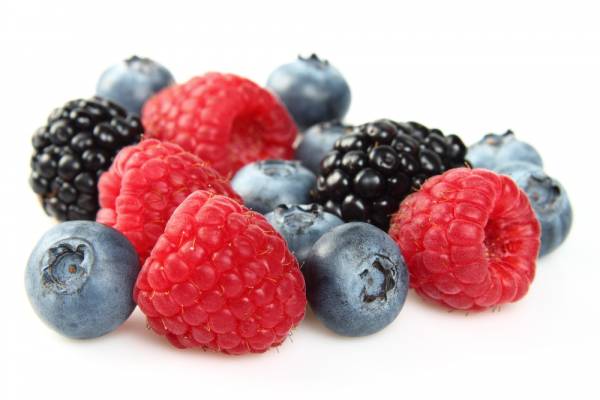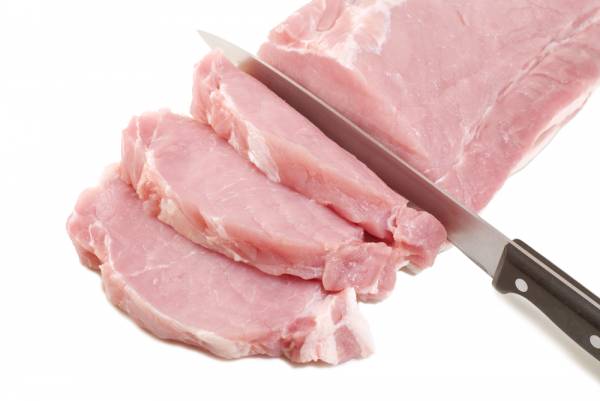Superfood is term that seems to get thrown around quite a lot these days. Whether it be the simple tomato or an exotic berry cultivated from the depths of the Amazon rainforest, these foods are revered for doing everything from being antioxidant powerhouses to rejuvenating the body and slowing the aging process. The question is, what exactly is a superfood and what are the best ones to include in your diet to maximize your fitness and health goals?
Superfood is a term that arose in the 1990s. They are called superfoods because they are thought to contain very high amounts of certain nutrients, making them a valuable addition into your diet. The potential health benefits of a superfood include:
- Regulating your metabolism and helping to burn body fat
- Protecting the bodies organs from toxins
- Regulating blood pressure and lowering cholesterol levels
- Helping reduce or even prevent inflammation in the body
- Preventing cancer and heart disease
- Promoting digestive health
There is a lot of debate about what makes a superfood or which items should be named a superfood. So, I’m going to help organize things for you based on my personal opinion. In this two-part article I will detail my top twenty superfoods and break them down into two groups: top ten supermarket superfoods and top ten exotic superfoods. Now exotic doesn’t mean they are rare; in this instance, I just mean they are not always supplied in your supermarket but will generally be able to be sourced from your health food store.
1. Tomatoes
The humble tomato can sometimes be a little underrated as a superfood, which is weird considering all of its benefits. Tomatoes are high in dietary fiber due to the lignin and insoluble cellulose contained in the skin and seeds. Tomatoes also contain vitamin A, are high in folate, and are an excellent source of vitamin C. Tomatoes also contain lycopene, a phytochemical responsible for making the tomato red. Lycopene is a prostate protector and can help to eliminate free radicals caused by UV rays. Cooking tomatoes has been found to concentrate the lycopene levels.
2. Olive Oil
The main type of fat found in all kinds of olive oil is monounsaturated fatty acids. Due to this type of fat, olive oil consumption has been shown to protect against lung, breast, colon, and ovarian cancer development and reduce cardiovascular disease by lowering your total cholesterol and LDL levels. Phenolics that are specific to olive oil may also help reduce oxidative damage to DNA and may have beneficial effects on blood pressure, obesity, rheumatoid arthritis, and immune function. With all of these health benefits olive oil is a great addition to salads and vegetables as a dressing.
3. Oily Fish
Oily fish are a great source of vitamins D and A and are packed with omega-3 fatty acids. Consumption of oily fish are beneficial in treating or helping to prevent an array of health conditions like heart disease and cancers of the breast, ovaries, and prostate. It can also decrease dementia risk, help to manage diabetes, improve brain and eye health, decrease depression and help alleviate inflammatory conditions. Great sources of oily fish include: salmon, tuna, trout, herring, sardines, and mackerel.
4. Berries
Berries are low in calories, have high fiber content, and are jam-packed full of vitamins and minerals, like vitamin C and folate. They contain flavonoids and phytochemicals, which may help prevent some forms of cancer and protect your skin. Cranberries and blueberries can aid in the prevention of bladder infections. The antioxidants in berries help your body fight the stress of free radicals due to oxidation. Several powerful antioxidants can be found in berries, including anthocyanins and quercetin. Anthocyanins give berries their vibrant color, reduce inflammation, and can help prevent and manage arthritis. Quercetin has also been found to help with inflammatory diseases like rheumatoid arthritis by decreasing the inflammation caused by chemicals in the synovial fluid

5. Broccoli
A staple food in any bodybuilder’s meal plan, a single stalk of this cruciferous vegetable packs 3g of protein. Broccoli is a high fiber food, and an excellent source of vitamin A, folate, vitamin C, and calcium. It also has some vitamin E and vitamin K, the blood-clotting vitamin manufactured primarily by bacteria living in our intestinal tract. Broccoli is a great detoxifier and aids the liver in ridding itself of toxins, it also contains a flavonoid called kaempferol. Kaempferol can lessen the impact of allergy-related substances on our body.
6. Natural Yogurt
Natural yogurt is a fermented dairy food filled with probiotics and enzymes. It is a rich source of protein, calcium, iodine, and phosphorous. The probiotics and enzymes not only help maintain good gut flora but also aid in digestion. The active cultures in yogurt may help certain gastrointestinal conditions, including lactose intolerance, constipation, diarrhea, colon cancer, and inflammatory bowel disease. Research indicates incorporating natural yogurt into your diet can provide an abundance of health benefits, from improving immune function to decreasing body fat.
7. Lean Meat
Meat is a rich source of iron, zinc, B vitamins, magnesium, and protein. As a protein source it contains all the essential amino acids making it a complete protein source. Small servings of meat and poultry can adequately meet your requirements for these essential nutrients. Minced turkey and chicken breast and skinless cuts of poultry contain less fat than many cuts of beef. Lean cuts of beef include round, sirloin, and chuck. Loin chops and tenderloins are lower in fat, if you are looking for pork. Wild game, such as venison, skinless wild duck, rabbit, bison, and kangaroo, are usually lower in fat than farmed animals.

8. Avocado
More than half the calories of the avocado come from the monounsaturated fats. Avocados are a great source of lutein, a carotenoid that works as an antioxidant and helps protect against eye disease. Half an avocado contains 3.4 grams of fiber, including soluble and insoluble, both of which your body needs to keep the digestive system running. As well as increasing feelings of fullness, the oleic acid in avocados can help reduce cholesterol levels. To reduce oxidation (browning) of an already-sliced avocado, sprinkle lemon juice on the exposed flesh and then refrigerate in a plastic bag.
9. Kale
Its green leaves are rich in vitamins A and C, potassium, calcium, iron, and folate, as well as the eye-healthy carotenoids lutein and zeaxanthin – these pigments accumulate in the retina and absorb damaging shortwave light rays. Kale also contains the flavonol kaempferol, which on top of helping lessen the impact of allergy-related substances on our body, has been found to help stop replication of pancreatic cancer cells. Kale is filled with fiber and sulfur, both of which are great for detoxifying your body and maintaining liver health.
10. Eggs
Eggs are one of the most nutrient-dense foods around. An egg is really three separate foods – the whole egg, the white, and the yolk – each with its own distinct nutritional profile. The protein in an egg is divided, with four grams in the white and three grams in the yolk. Even though they are low in calories, eggs are a rich source of protein and are packed with nutrients thought essential to good health, particularly vitamin D, vitamin B12, selenium, and choline. Eggs contain the richest mix of essential amino acids in any food, making them a muscle-building powerhouse. Just remember to eat the whole egg to get all the benefits.
Conclusion
So there you have it my top ten supermarket superfoods. Now the one thing you have to remember is that all fresh produce has a place in our diets, and, let’s be honest, these types of list are quite subjective. (Even I can admit that about my own list.) All of the above are a great way to increase the benefit of your training regimen. So, have a look next time you are in the supermarket and throw a few in your cart.
Next week I will be explaining antioxidants and discussing my top ten exotic superfoods.
Photos courtesy of Shutterstock.






